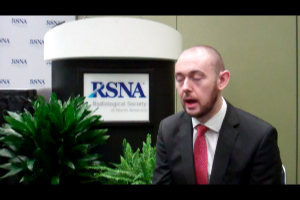Interventional Radiology Procedure Preserves Uterus in Patients with Placenta Accreta
Released: December 03, 2014
At A Glance
- Placenta accreta is a condition in which the placenta abnormally implants in the uterus.
- Surgical removal of the uterus, or hysterectomy, is commonly required to control hemorrhage caused by placenta accreta.
- Prophylactic internal iliac artery balloon placement helps protect against severe bleeding after delivery and, in some cases, prevents the need for hysterectomy.
- RSNA Media Relations
1-630-590-7762
media@rsna.org - Maureen Morley
1-630-590-7754
mmorley@rsna.org - Linda Brooks
1-630-590-7738
lbrooks@rsna.org
CHICAGO – Researchers reported today on a procedure that can preserve fertility and potentially save the lives of women with a serious pregnancy complication called placenta accreta. Results of the new study presented at the annual meeting of the Radiological Society of North America (RSNA) showed that placement of balloons in the main artery of the mother's pelvis prior to a Caesarean section protects against hemorrhage and is safe for both mother and baby.
Placenta accreta, a condition in which the placenta abnormally implants in the uterus, can lead to additional complications, including massive obstetric hemorrhage at delivery. Surgical removal of the uterus, called hysterectomy, is commonly required to control such bleeding.
"Massive obstetric hemorrhage is the number one cause of maternal mortality worldwide and abnormal placental implantation is a major risk factor for this," said Patrick Nicholson, M.B., B.Ch., an interventional radiologist trainee at Cork University Hospital in Cork, Ireland.
At Dr. Nicholson's hospital, patients with abnormal placental implantation are treated by a multidisciplinary team that plans both an elective Caesarean (C-)section and prophylactic internal iliac balloon placement under fluoroscopic guidance. Immediately prior to the patient's C-section, an interventional radiologist uses specialized techniques to insert balloons into the two internal iliac arteries in the pelvis that supply the uterus with blood flow.
"Following the delivery of the baby, these balloons can be inflated to slow blood flow to the uterus, which allows the obstetrician time to gain control of the hemorrhage," Dr. Nicholson said.
For his study, Dr. Nicholson retrospectively reviewed the charts of all patients with abnormal placental implantation who received prophylactic internal iliac balloon placement since 2009. Over a 44-month period, the hospital treated 21 patients (mean age 35) who underwent balloon placement immediately followed by C-section.
In 13 of the 21 deliveries, the arterial balloons were inflated and when no longer needed, deflated and removed from the patient. The interventional radiology procedure was a technical success in 100 percent of the cases. However, despite use of the balloons, two of the patients required a hysterectomy.
"Without the balloons, many more of the patients would likely have required a hysterectomy," Dr. Nicholson said.
There were no maternal or fetal complications resulting from the interventional procedure.
"We are the first group to report on the fetal outcomes associated with prophylactic internal iliac artery balloon placement," Dr. Nicholson said. "There were no adverse outcomes for the babies as a result of this procedure."
According to Dr. Nicholson, the incidence of abnormal placental implantation has been increasing steadily over recent years.
"The risks for placenta accreta and its variations increase with a woman's age, previous C-sections and in vitro fertilization, all of which we expect to see more of in the coming decades," he said. "There's clearly a need for more research in this field."
Dr. Nicholson said results of the study add to a growing body of evidence that high-risk placental implantation pregnancies are best managed in a multidisciplinary setting.
"This research highlights the value of interventional radiology in managing this very serious, high-risk condition to control bleeding and maternal and fetal complications," Dr. Nicholson said.
Co-authors on the study are Karl James, M.B., B.Ch., MRCS, Jennifer Murphy, M.B., B.Ch., MRCPI, John G. Buckley, M.D., Liam D. Spence, M.B., B.Ch., and David J. Tuite, M.B., B.Ch.
Note: Copies of RSNA 2014 news releases and electronic images will be available online at RSNA.org/press14 beginning Monday, Dec. 1.
RSNA is an association of more than 54,000 radiologists, radiation oncologists, medical physicists and related scientists, promoting excellence in patient care and health care delivery through education, research and technologic innovation. The Society is based in Oak Brook, Ill. (RSNA.org)
Editor's note: The data in these releases may differ from those in the published abstract and those actually presented at the meeting, as researchers continue to update their data right up until the meeting. To ensure you are using the most up-to-date information, please call the RSNA Newsroom at 1-312-791-6610.
For patient-friendly information on interventional radiology, visit RadiologyInfo.org.
Video clips (YouTube) and .mp4
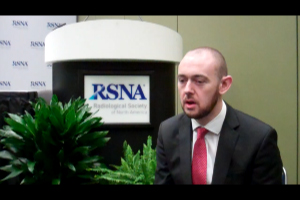
Video 1. Dr. Patrick Nicholson discusses what is different with his research than prior studies on placenta accreta.
Download.mp4
(Right-click and Save As)
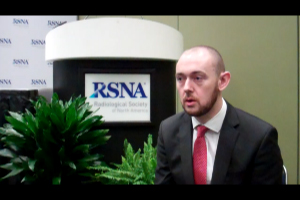
Video 2. Dr. Patrick Nicholson explains the condition, placenta accreta.
Download.mp4
(Right-click and Save As)
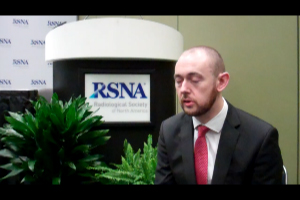
Video 3. Dr. Patrick Nicholson explains the risks to mother and baby associated with placenta accreta.
Download.mp4
(Right-click and Save As)
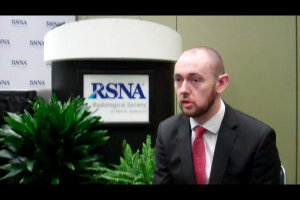
Video 4. Dr. Patrick Nicholson explains the prophylactic internal artery balloon treatment and how it works.
Download.mp4
(Right-click and Save As)
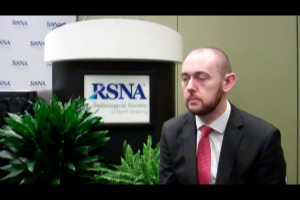
Video 6. Dr. Patrick explains radiology’s role in the procedure.
Download.mp4
(Right-click and Save As)

